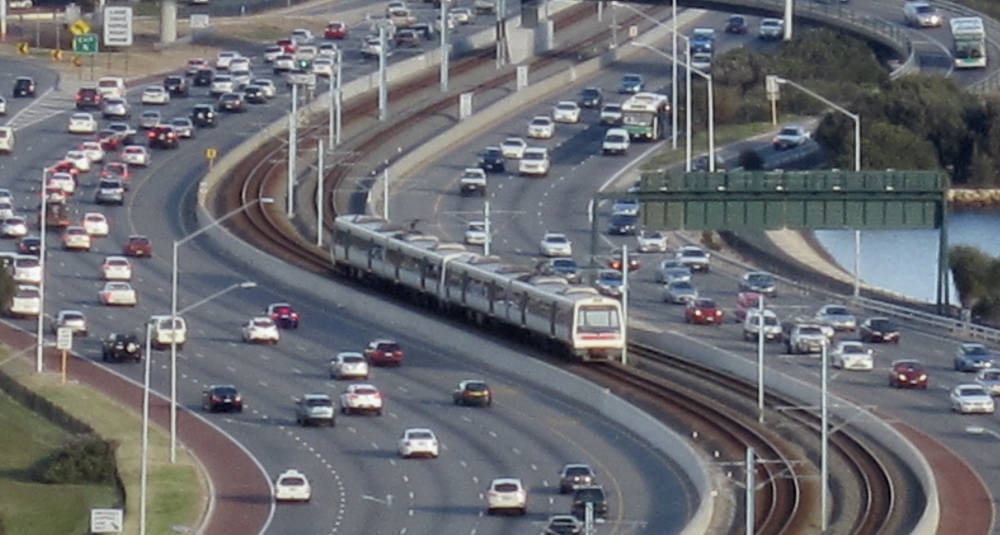Study author re-think on Rowville suggests way ahead on Doncaster
The Public Transport Users Association has backed a renewed push on rail service to Doncaster Hill, and called for signalling upgrade works on the Dandenong rail corridor to be expanded to include the South Morang and Hurstbridge lines.
“We’ve all heard the arguments about there being no room on the network to fit trains to Doncaster, or to Rowville for that matter,” said PTUA President Dr Tony Morton. “But these arguments are now simply out of date.”
Previous feasibility studies for both Doncaster and Rowville rail had not anticipated capacity-boosting works such as the Cranbourne-Pakenham Rail Corridor Project, Dr Morton said.
“The high-capacity signalling to be rolled out on the Dandenong line had not been part of the scope for those studies,” he said. “But with this work now proceeding, the author of the Rowville study confirms the key capacity constraint will now be lifted.”
On 3 October, Rowville Rail Study author William McDougall told the Knox Leader that signalling upgrades as part of the project meant the Rowville extension could proceed sooner. “If the signalling added sufficient capacity to enable the Rowville trains to be added to the mix, then you could look at building Rowville before the Metro improvements,” Mr McDougall said.
“Logically, Mr McDougall’s words apply equally to Doncaster as to Rowville,” said Dr Morton. “In fact, the Clifton Hill lines are technically a lot simpler, because there are no V/Line or freight trains to worry about, and trains already have their own dedicated path through the City Loop and back out to Clifton Hill without crossing any others.”
The Clifton Hill lines were a ‘textbook case’ of where high-capacity signalling worked well, Dr Morton said. “There are quite a few options available. Even if you just overlaid new train control on the existing signals, you’d have much the same system that allows trains to run every 120 seconds on the RER line in Paris.”
“That would give you ample room to run 6 trains per hour to Doncaster as well as boosting the peak service to 11 trains each per hour on the South Morang and Hurstbridge lines, from 9 currently. And even that wouldn’t exhaust the available capacity.”
Dr Morton blamed a “timid planning mindset” for lack of progress on Doncaster rail. “Unfortunately, you’ve got a management culture here whose core mission for half a century was finding reasons not to do things. Saying that Doncaster rail depends on the Metro tunnel is a good example. The Metro tunnel doesn’t even touch the Clifton Hill tracks and won’t alter the capacity of these lines one iota, but it’s typical of the bureaucratic excuses used in the past against everything from the South Morang extension to running more trains on the Frankston line.”
“This culture can and will change,” said Dr Morton. “But it also means we shouldn’t be afraid to bring in new ideas from outside that culture, and to question advice that prevents us from building the future.”
Cost remained a key question for the Doncaster line that needed further study, Dr Morton said. “Unfortunately it’s been difficult to get reliable cost estimates for a project like this because there’s still so much confusion about the scope and objectives – even down to whether the aim is to serve a major activity centre or a car park.”
“In this situation, you do exactly what the Eastern Freeway builders did 30 years ago – you take it forward in stages,” said Dr Morton. “The first stage is the obvious one, along the purpose-built freeway median as far as Bulleen with interchange to the existing DART buses. Get that up and running while you figure out the route and funding for the second stage to Doncaster.”
The community would go on seeking commitments to Doncaster rail from all parties in November’s election, said Dr Morton. “Labor and the Greens have both committed to the most important step necessary, which is cancelling the East West Link. If the tollroad were to go ahead it could kill off Doncaster rail for ever.”
“The East West Link aside, we know there’s a feasible pathway for Doncaster rail: first the high-capacity signalling upgrade, followed by the low-cost first stage, then on to Doncaster. The question now is, how far will the politicians go with the community on this journey?”
Related media coverage:
- Manningham Leader: Doncaster bus ride invitation from Greens rejected by Daniel Andrews



